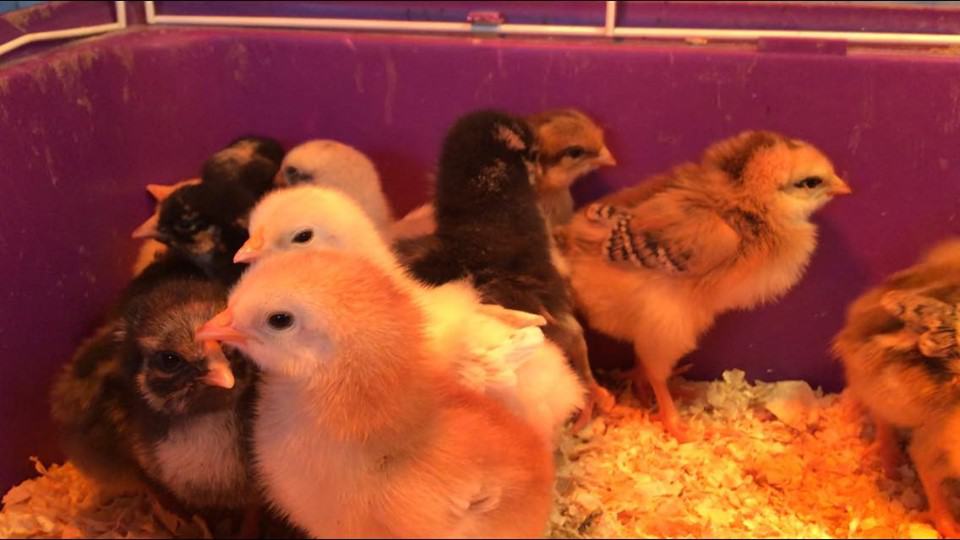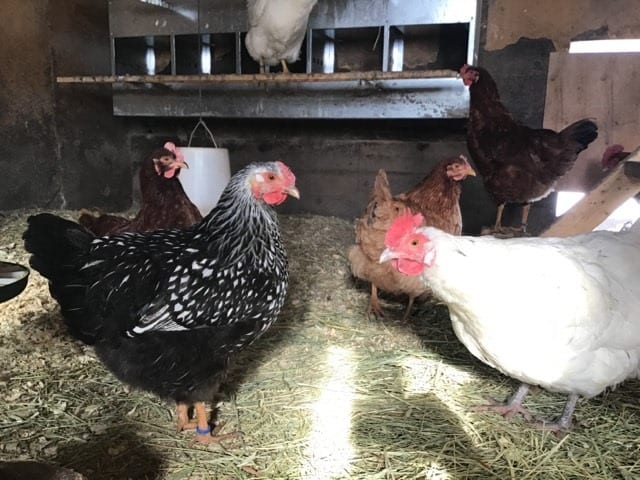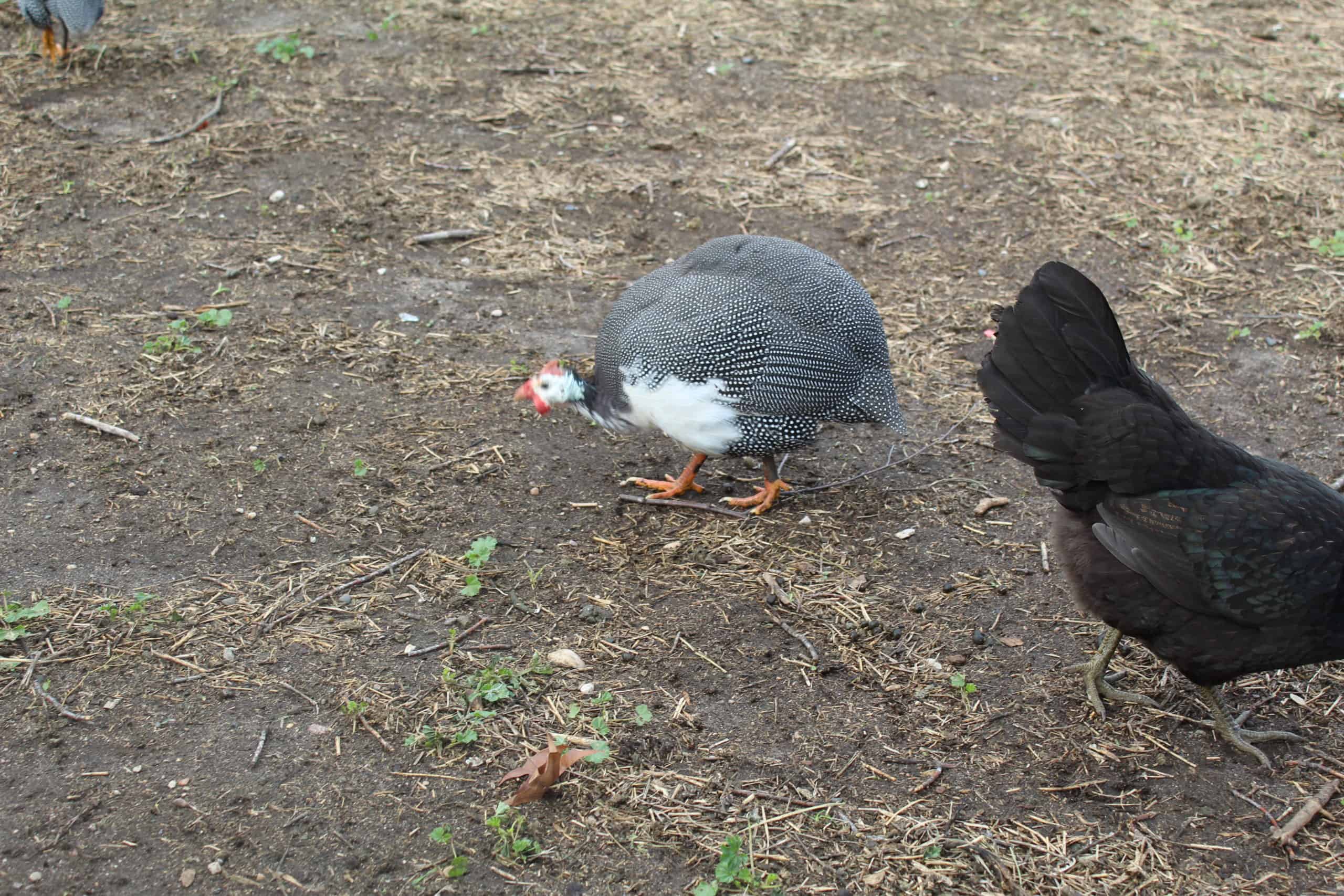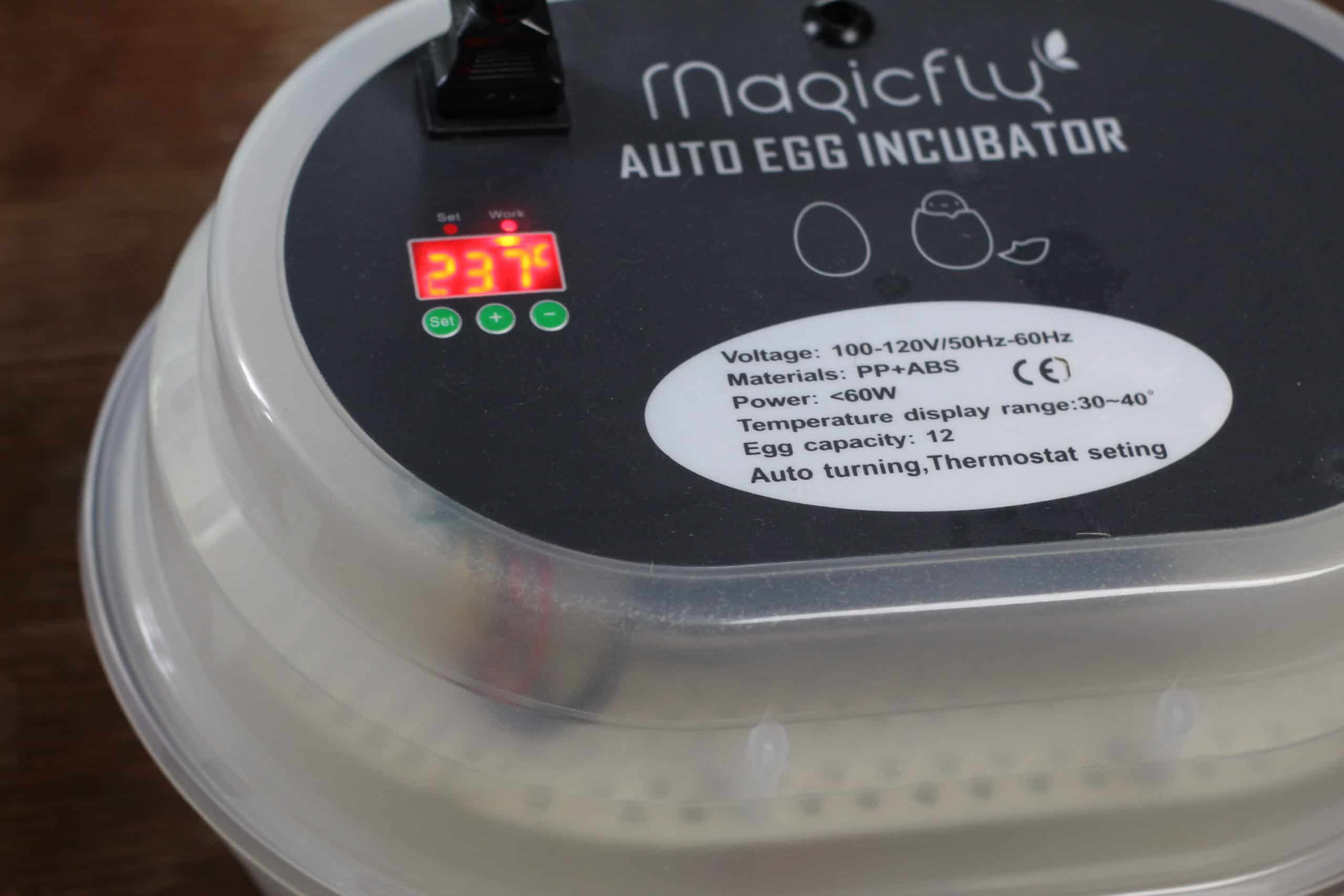Lice in the Chicken Coop
Some of our chicken started looking a little rougher than usual, even for molting time. That coupled with one or two lethargic birds had me investigate them closer. Unfortunately it was as I feared, we have lice in the chicken coop.
Thankfully, after talking to a few other farmers, I learned that lice in the coop is something many folks have to deal with. Just like your kids at school, even if you have good hygiene they can still catch it one way or another.
What are Poultry Lice?
Lice you find on your chickens are an external parasite that is specific just to poultry. Thankfully they are not a parasite that can survive on human hosts.
They don’t suck blood from your chickens but they do eat parts of the feather shafts, dead skin, and the scales on their legs.
They are small and white and can live up to a few months. Turns out there are many different kinds of them. I think we have the fluff, shaft, or body variety.
How do I tell if my Chickens have Lice?
For our chickens, the first sign was a few birds with odd bald spots on their bodies. Our girls usually molt in June so it’s not uncommon for some to look a little ragged, but this year it was especially prevalent in a few birds.
Laying always takes a dive this time of year too, but in a flock of 20 birds our eggs dropped down to zero.
Here are some more signs and symptoms of lice in your coop.
- Bald spots and ragged feathers
- Loss of appetite
- Chickens pecking themselves and preening more than usual
- Drop in egg production
The vent area tends to be a primary spot for the lice to lay eggs and infest. Under the wings where it is warm is another area to check. Their eggs (called nits) will be a white clump down at the base of the feather.
When you check for them they move fast, so part feathers and look for their devious little bodies scurrying into the darkness and protection of feathers.
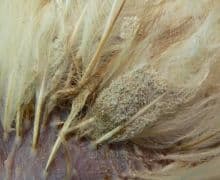
How do you get Lice in the Chicken Coop?
Lice can get into your coop in a few ways.
- Wild Birds – They are often carriers of lice and if your birds free range or you have wild stow-aways in your coop, that might be the culprit. We think this is the most likely cause for our birds to get lice.
- New Birds or Used Gear – If you buy adult birds from somewhere, it is a good idea to quarantine them for a time to determine if they have any parasites before introducing them to your flock. Used chicken equipment may also have lice on it (they can stay alive up to one week away from a host) so make sure to properly disinfect or quarantine that gear for 1-2 weeks.
- Living Conditions- Lice can feed on feathers and bits of dead chicken skin, so a dirty coop can provide a bonanza for chicken lice.

Ways to Prevent Lice in the Chicken Coop
Like I previously said, lice on chickens is something you can do a lot to prevent, but it still might sneak into your coop. Prevention is key in this area and here are a few ways to keep your birds free from lice. We’ll be working on a few of these ourselves!
- Keep a clean coop. Lice feed on feathers and skin, so keeping your coop and nest boxes cleaned and freshened up with new bedding regularly will prevent the lice from having a place to live even if they fall off the chickens.
- Limit wild bird exposure. If your birds free range like ours this is hard to do, but might be an option for some.
- Provide Dust Baths with DE. Regular dust bathing is how chickens keep parasites at bay most of the time. DE (as I’ll talk about below) is an added tool in killing off lice. Mixing some Diatomaceous Earth in their regular dusting area can help. If you don’t have good dusting areas naturally around your farm, build a little chicken sand box complete with fine sand and DE mixed in.
- Check your Birds. Lice are more easily managed when you catch them early. Take a look at your birds’ vents once a month or so to look for any signs of the parasite.

Treating Lice on Chickens
There are a few ways to treat lice in chickens. There are chemical options that might include permethrin or sevin sprays or powders. A first when we found lice we panicked and bought a bottle of a chemical treatment at the local fleet supply store. After reading the various warnings on the bottle I couldn’t bring myself to use it.
Instead, we read that Diatomaceous Earth (DE) can be used to treat lice on chickens. This is a naturally occurring type of rock that some folks even use for de-worming purposes. When used for lice, the DE is tiny but sharp. The idea is to get it worked into your chicken’s feathers where the sharp edges scratch the exoskeletons of the lice and kills them.
Here’s what we did to treat our lice problem.
- Cleaned out the Nest Boxes. I scooped every bit of bedding out of there, then sprinkled a layer of DE in. Fresh shavings were added on top of that.
- Cleaned out the entire coop. I scraped and scooped as much as I possibly could to bring the coop down to the bare floor.
- Sprinkle DE. Next, I threw down a layer of DE on the entire floor and on the roost bars as well. I highly recommend a mask for this as that powder is very fine and easy to gunk up our nose and throat.
- Treat the Birds. This is definitely a two person job if you can find extra hands. My husband and I went down in the morning before the birds were out for the day. I held them by their legs and my husband would pour about a half a cup of DE directly on the birds in a few key places; under each wing, directly on their butts, on their breast, and on their backs. Each time he would pour (1/2 cup on each spot), I would then rub the DE into their feathers as best I could. Then we tossed them out the door to go about their day.
- Treat the birds again. And maybe again. At the time I am writing this we have given the birds their first treatment. After seven days we will give them another treatment. This is because any lice that are just eggs now, will hatch within about seven days. Another dusting will take them out. Just to be safe, we will likely do one more treatment the week following to mop up any escapees.

Watch and Learn
Pin it for Later
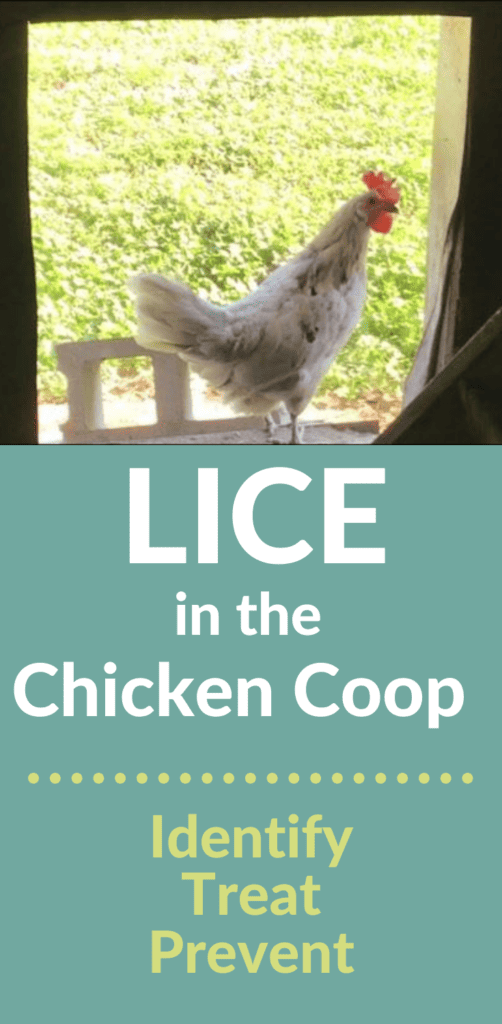
Sources
- University of Minnesota Extension
- Colorado State Extension
- Treating and Preventing Lice in Chickens – Gail Damerow
- Storey’s Guide to Raising Chickens – Gail Damerow


